
10 Innovative Chatbot Examples to Enhance Customer Engagement
GeneralOverview
This article delves into innovative chatbot examples that significantly enhance customer engagement across various industries. By highlighting specific implementations such as HubBot and the Uber Bot, it illustrates how these AI-driven solutions not only improve operational efficiency but also elevate customer satisfaction and retention rates. The transformative potential of chatbots in modern business interactions is undeniable, making a compelling case for their adoption. As businesses seek to optimise their customer interactions, embracing these advanced technologies is not just beneficial; it is essential for staying competitive in today’s market.
Introduction
As businesses increasingly seek innovative ways to enhance customer engagement, chatbots have emerged as a transformative solution across various industries. These AI-driven tools not only streamline communication but also significantly elevate customer satisfaction and retention rates.
However, with numerous options available, which chatbot examples truly stand out in their ability to revolutionise client interactions? This article explores ten groundbreaking chatbot implementations that are setting new benchmarks for customer engagement in 2025, revealing the unique strategies that make them effective in meeting modern consumer demands.
Agentics: Tailored Voice AI Solutions for Enhanced Customer Engagement
Agentics excels in delivering tailored voice AI solutions that significantly enhance client engagement. By leveraging advanced voice recognition and natural language processing technologies, businesses can automate communication processes, streamline workflows, and elevate client interactions. These solutions are crafted to be user-friendly and scalable, addressing the needs of a diverse array of industries. This customised approach not only boosts operational efficiency but also leads to remarkable improvements in client satisfaction, with organisations reporting a 31.5% increase in satisfaction scores and a 24.8% rise in client retention.
Looking ahead to 2025, the impact of voice AI on client engagement metrics is projected to be substantial, as businesses that adopt these technologies set new standards for effective communication. As Harshitha Raja aptly notes, ‘Voice AI isn’t just transforming service—it’s altering how we work.’ This perspective underscores the broader transition towards intelligent, responsive communication with clients that voice AI enables, ultimately revolutionising the landscape of business interactions.
HubBot by HubSpot: Streamlining Customer Service with Instant Responses
HubBot, developed by HubSpot, revolutionises support services by delivering immediate answers to common inquiries. This AI-powered chatbot adeptly manages a variety of tasks, from responding to frequently asked questions to scheduling appointments, significantly reducing the burden on human agents. By automating these interactions, HubBot enhances operational efficiency and guarantees prompt support for clients, which is crucial for boosting satisfaction and fostering loyalty.
Indeed, studies show that instant response automated systems can markedly improve retention rates, as 71% of clients prefer these systems for order status updates over speaking with a representative. Furthermore, 42% of consumers expect a response from automated systems within five seconds, underscoring the growing demand for rapid interactions. Additionally, HubBot’s ability to provide swift responses fosters a more personalised experience for clients, aligning with the expectation that 66% of clients have for companies to understand their unique needs.
As organisations increasingly embrace chatbot examples, the impact on service efficiency becomes evident, with numerous companies reporting substantial reductions in response times and operational costs. In fact, conversational AI is anticipated to lower contact centre labour expenses by $80 billion by 2026, highlighting the financial advantages of implementing AI-driven solutions like HubBot.
Uber Bot on WhatsApp: Facilitating Seamless Communication in Transportation
The Uber Bot on WhatsApp transforms the ride-hailing landscape by enabling users to book rides directly through the messaging platform, thereby eliminating the necessity to download the Uber app. This integration significantly enhances user convenience, allowing individuals to effortlessly request rides, receive real-time updates on driver locations, and access answers to common inquiries.
With over 100 billion messages exchanged daily on WhatsApp, the platform’s immense popularity markedly boosts user engagement and satisfaction. In fact,
- 68% of users regard WhatsApp as the simplest method to reach a business,
- 54% prefer utilising WhatsApp Business for service and support.
Consequently, examples of chatbots like Uber’s not only streamline the booking process but also enhance operational efficiency within transportation services.
Looking ahead to 2025, the impact of automated assistants like the Uber Bot is expected to further elevate ride-hailing service efficiency, making transportation more accessible and user-friendly for millions of customers worldwide.
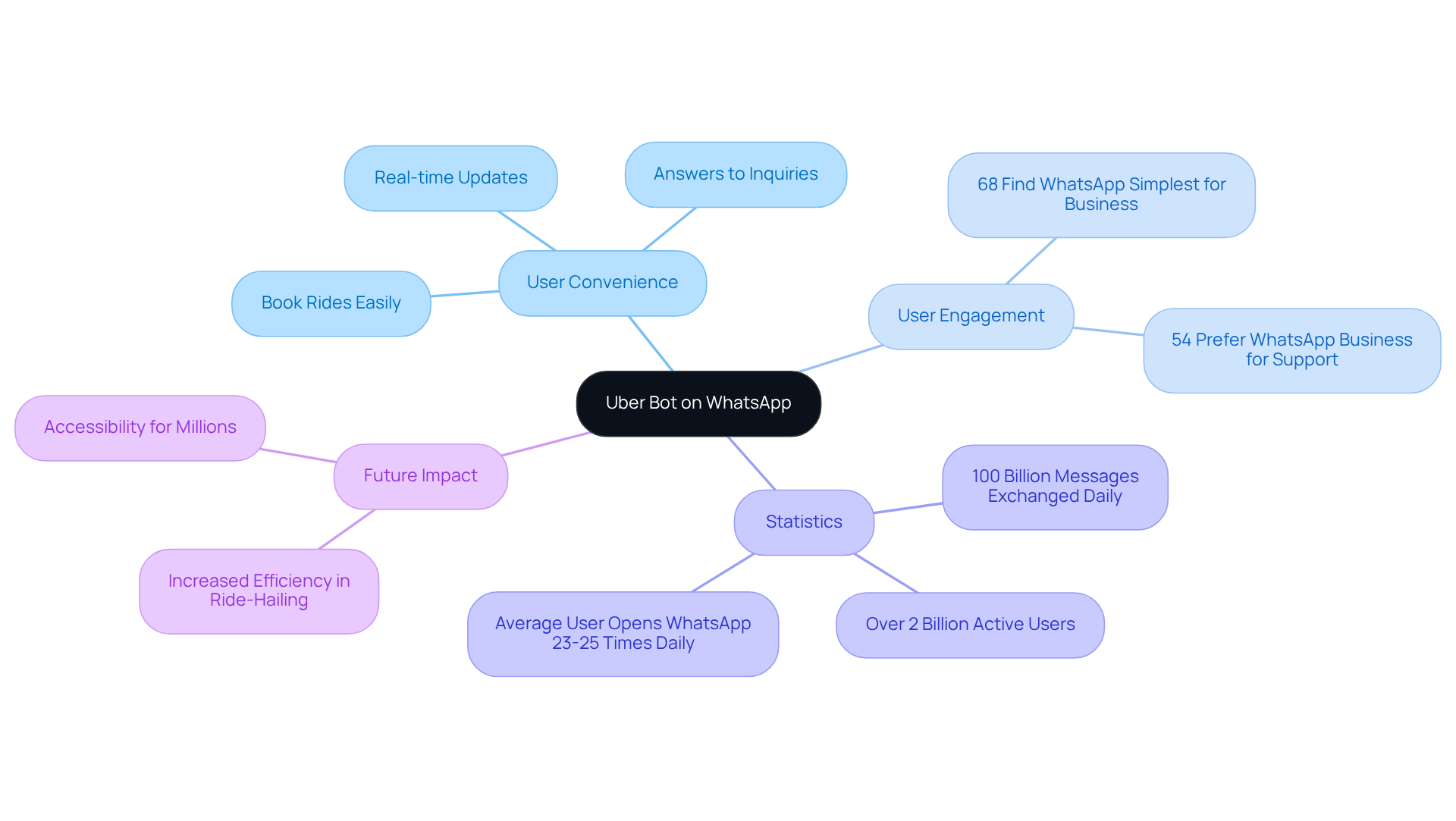
Princeton University Chatbot: Enhancing Student Engagement and Support
Princeton University has successfully integrated an AI-driven chatbot, which is one of the notable chatbot examples aimed at significantly enhancing student interaction and support. This powerful tool adeptly addresses a wide range of student inquiries, from admissions processes to course details and campus resources. By providing immediate responses and 24/7 availability, the chatbot streamlines access to essential information and enriches the overall student experience.
Research indicates that chatbot examples as AI conversational agents can elevate student involvement metrics by delivering prompt support, thereby fostering a more encouraging educational atmosphere. Notably, studies reveal that:
- 91% of chatbot examples provide personalised assistance accurately.
- Nearly 48% of students assert that chatbots have enhanced their learning effectiveness.
As educational institutions increasingly embrace these technologies, the positive impact on student satisfaction and resource utilisation becomes unmistakable, underscoring the transformative potential of AI in higher education. To further amplify the effectiveness of such tools, educational institutions are encouraged to implement feedback mechanisms that continuously refine chatbot interactions.
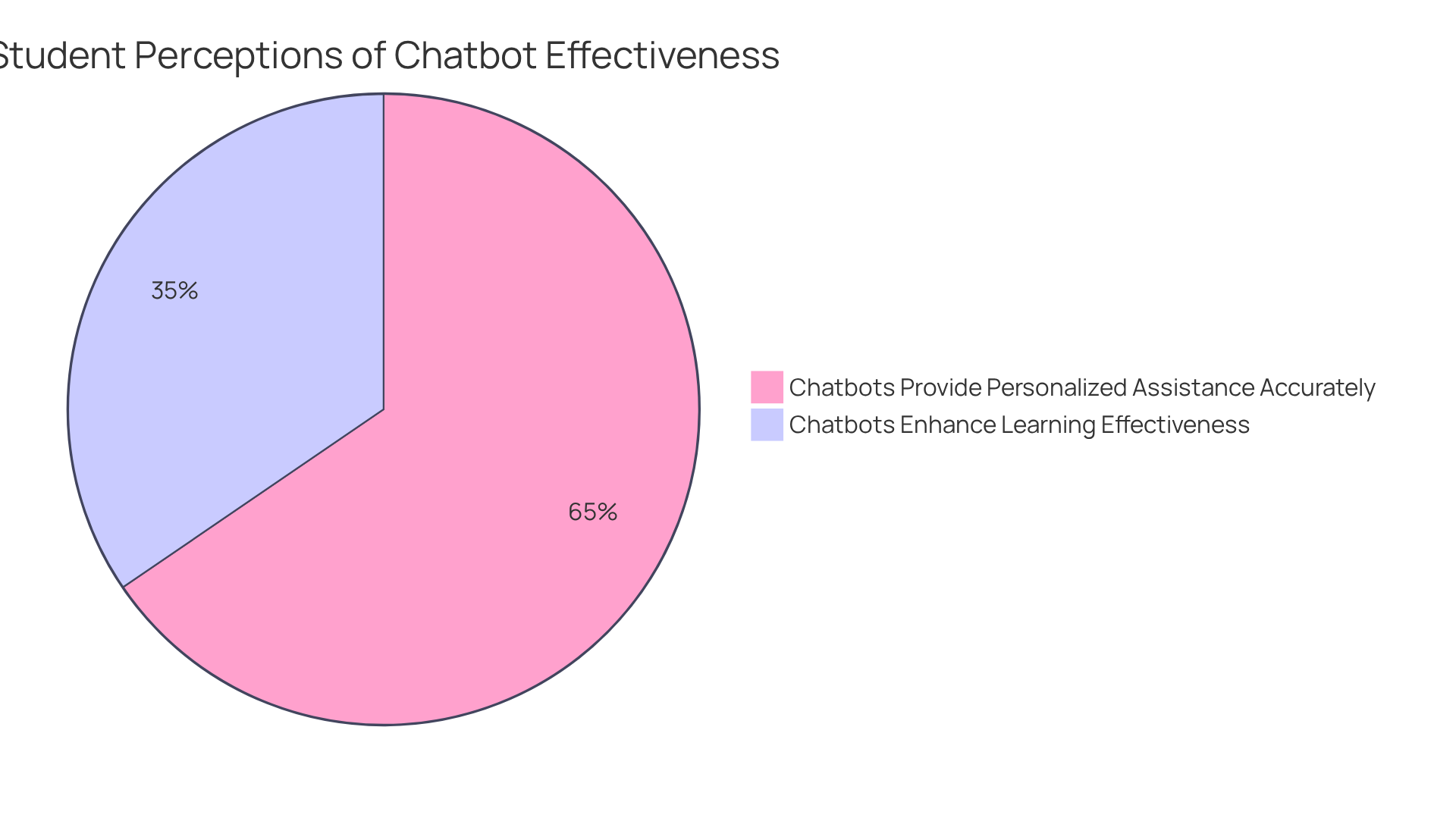
Stryve: Leveraging AI for Lead Generation and Visitor Engagement
Agentics harnesses advanced voice AI technologies to significantly boost lead generation and enhance visitor engagement on websites. Their real-time voice AI solutions facilitate immediate interactions with visitors, effectively answering queries and guiding them through the sales funnel. This automation not only streamlines lead capture but also enriches the overall visitor experience, resulting in improved conversion rates.
In fact, businesses utilising voice AI solutions have reported a notable increase in conversion rates compared to those without. By incorporating these intelligent systems, Agentics enables organisations to enhance their client interactions and drive sales success.
For Sales Directors looking to implement voice AI solutions, evaluating the specific needs of your sales funnel and selecting a solution that aligns with those needs can lead to significant improvements in engagement and conversion.
Intercom: Improving Customer Interactions with Conversational AI
Intercom leverages conversational AI to significantly enhance client interactions across diverse channels. Their chatbot examples engage users in meaningful dialogues, delivering personalised responses that are meticulously tailored to individual user data. This strategic approach not only boosts client satisfaction but also equips companies with invaluable insights into client preferences and behaviours. Consequently, businesses can refine their marketing strategies with greater precision.
Looking ahead to 2025, the emphasis on personalization through chatbot examples is projected to markedly elevate client satisfaction, with studies indicating that 80% of users report positive experiences when interacting with AI-driven services. By harnessing conversational AI, companies can cultivate a more engaging and responsive customer experience, ultimately fostering loyalty and satisfaction.
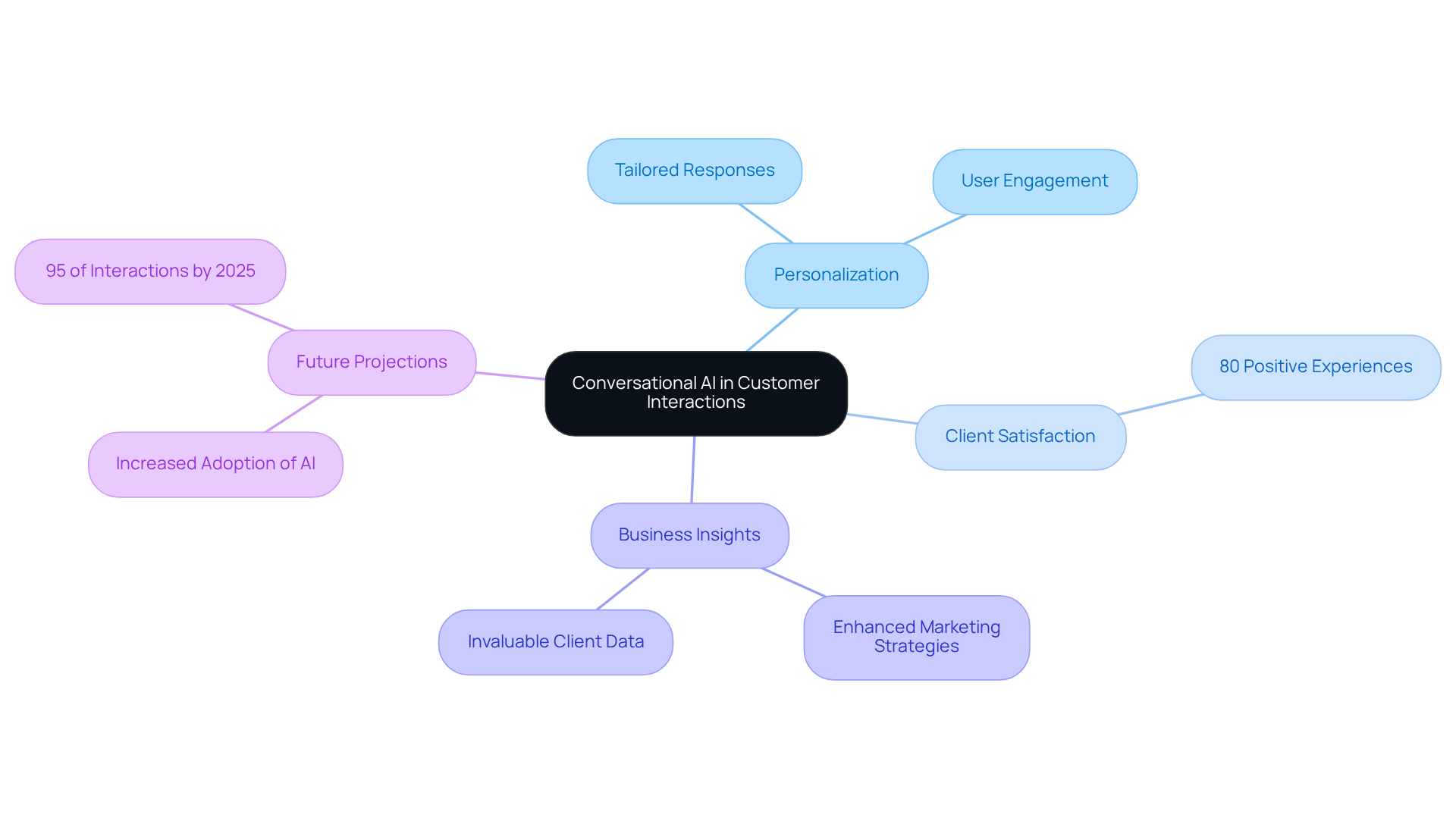
Revealbot: Automating Marketing Tasks and Enhancing User Engagement
Revealbot is an advanced marketing automation tool designed to empower businesses in managing and optimising their advertising campaigns across multiple platforms. By automating critical tasks such as ad creation, scheduling, and performance tracking, Revealbot significantly enhances user interaction, ensuring that marketing efforts are both efficient and effective.
Recent statistics reveal that:
- 47% of marketers utilise automation for social media campaigns
- 63% automate their email campaigns
This data underscores the increasing reliance on automation tools like Revealbot. With this tool, marketers can focus on strategic initiatives as the AI efficiently handles routine tasks, ultimately driving higher conversion rates and improving client satisfaction.
Moreover, the global marketing automation market is projected to surge from $5.65 billion in 2024 to $14.55 billion by 2031, highlighting the growing significance of such tools in today’s landscape.
Despite this growth, challenges persist; 33% of companies identify a lack of internal expertise as a substantial barrier to implementing automation software. As marketers confront these challenges, Revealbot emerges as a solution that not only streamlines processes but also elevates overall campaign performance.
Sendible: Managing Social Media Interactions with AI Chatbots
Sendible effectively employs AI virtual assistants to enhance social media interactions, automating replies to user inquiries, scheduling posts, and analysing participation metrics. This automation streamlines social media management and significantly improves client interaction by ensuring timely and relevant communications.
In 2025, the impact of automated replies is expected to elevate client interaction levels, with research indicating that companies utilising virtual assistants can experience a 30% increase in client satisfaction. Furthermore, chatbot examples are expected to handle up to 79% of routine inquiries, allowing human representatives to focus on more complex matters.
By maintaining a consistent online presence and responding promptly to client needs, Sendible empowers businesses to cultivate stronger connexions with their audience, ultimately driving higher engagement rates across social media platforms.
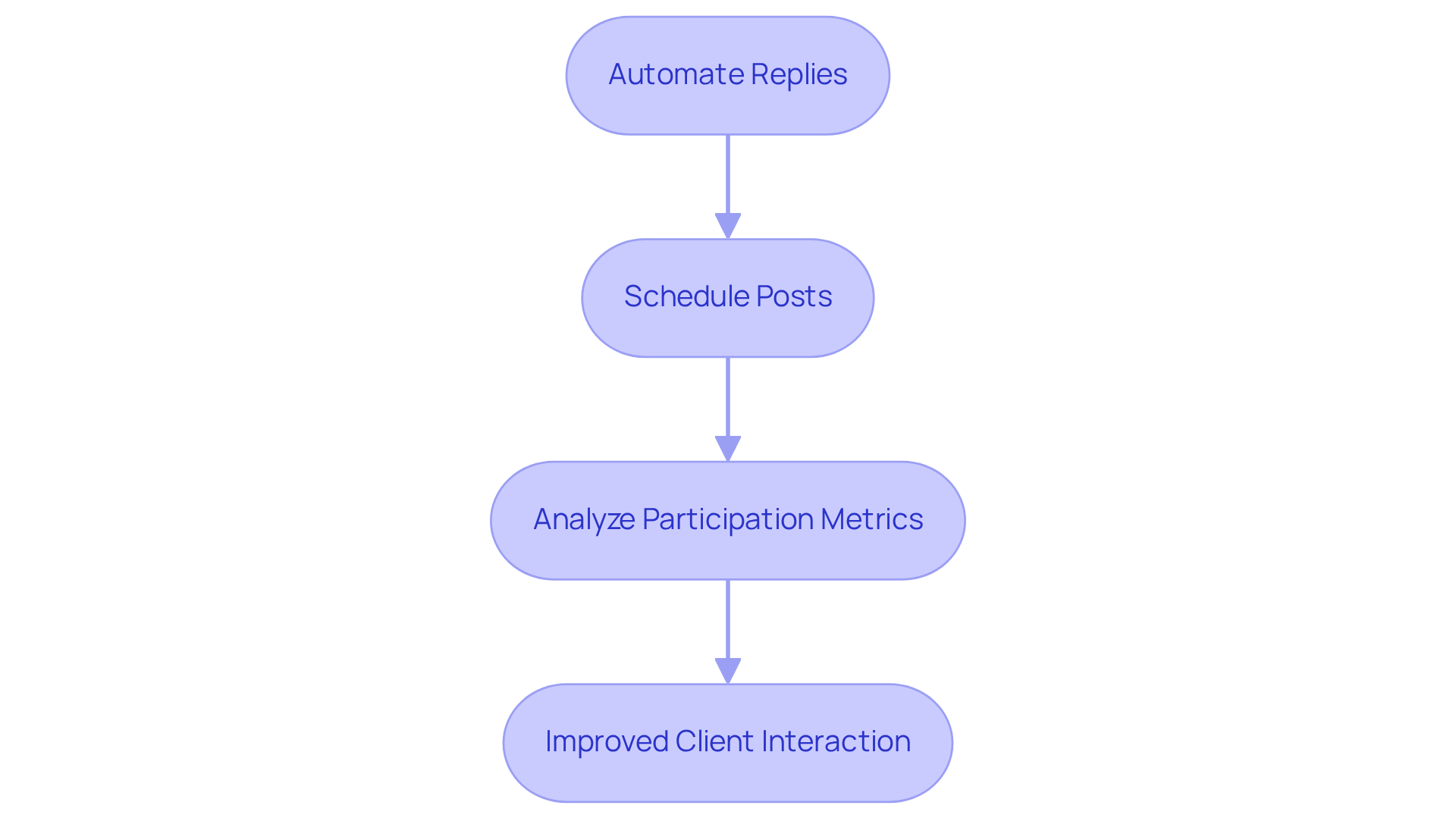
Trovata: Streamlining Financial Services with AI Chatbots
Trovata harnesses the power of AI conversational agents to revolutionise financial services, delivering clients immediate access to their financial information and insights. These advanced chatbot examples streamline a variety of tasks, including:
- Cash flow management
- Transaction inquiries
- Financial forecasting
By automating these essential processes, Trovata not only enhances the user experience but also significantly boosts operational efficiency within the finance sector. The ability to provide instant responses and customised insights empowers clients, ensuring they remain informed and engaged, which ultimately leads to greater satisfaction. As financial institutions increasingly adopt AI-driven solutions, the impact of chatbot examples on user experience is expected to grow, establishing these examples as indispensable tools in modern finance.
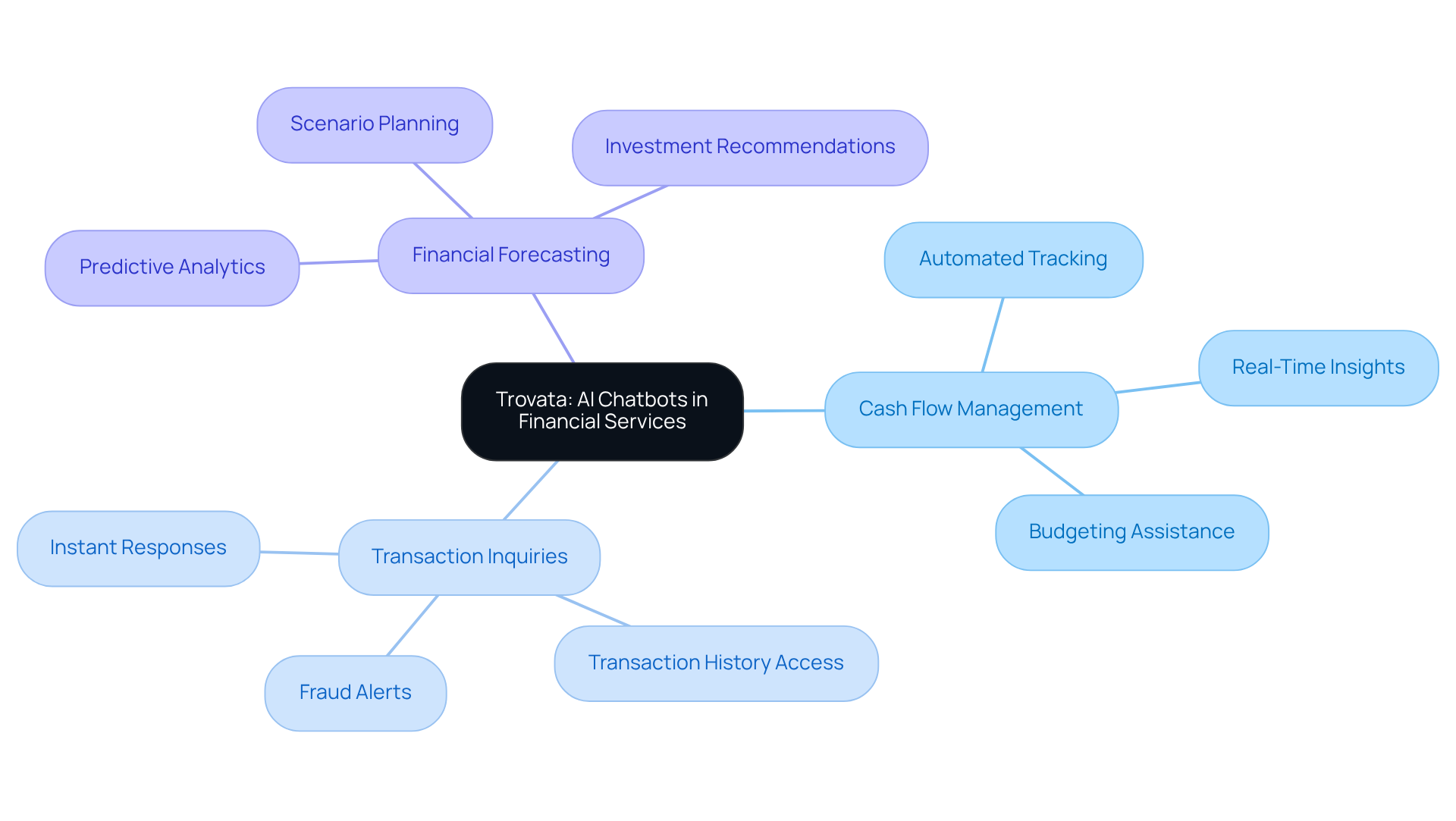
Keap: Automating Customer Follow-Ups for Small Businesses
Keap offers automation solutions that empower small enterprises to manage client follow-ups with remarkable efficiency. Their AI-driven chatbot examples are designed to send personalised messages, reminders, and updates to clients, ensuring that no lead goes unnoticed. By automating these follow-up processes, Keap not only aids small enterprises in nurturing robust client relationships but also fosters repeat transactions.
Companies utilising personalised messaging in their client relationship management strategies report significantly higher engagement rates; in fact, automated communications can generate up to 320% more revenue than traditional methods. This strategic approach allows small businesses to concentrate on building meaningful connexions while utilising chatbot examples to efficiently handle routine interactions, ultimately enhancing customer satisfaction and loyalty.
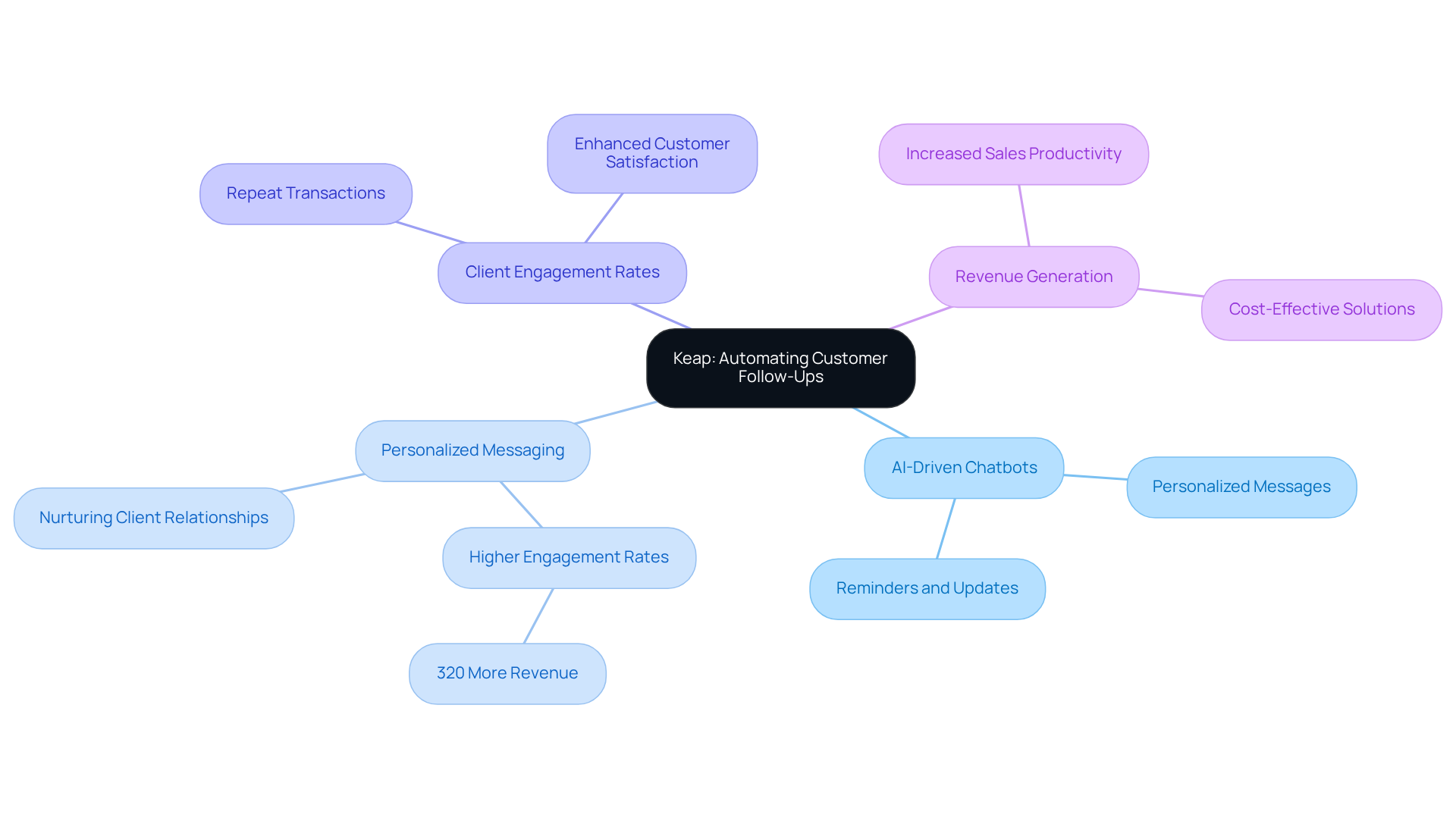
Conclusion
The exploration of innovative chatbot examples underscores their transformative role in enhancing customer engagement across various sectors. By integrating advanced technologies, these chatbots not only streamline communication but also significantly improve operational efficiency and client satisfaction. This central idea emphasises how businesses can leverage these AI-driven solutions to create more personalised and responsive interactions, ultimately leading to stronger customer relationships.
Throughout the article, various chatbot examples such as Agentics, HubBot, and the Uber Bot illustrate the diverse applications of AI in customer service, education, marketing, and finance. Each example highlights unique features and benefits, from tailored voice AI solutions to automated responses that meet the growing demand for instant communication. The statistics presented underscore the profound impact these technologies have on customer retention, satisfaction, and overall business performance.
As organisations continue to adopt chatbot technologies, the importance of staying ahead of trends and understanding user preferences becomes paramount. The advancements in chatbot capabilities signal a shift toward more intelligent, efficient, and engaging customer interactions. Embracing these innovations not only enhances service delivery but also positions businesses to thrive in an increasingly competitive landscape. It is crucial for companies to invest in and refine their chatbot strategies, ensuring they meet the evolving expectations of their clients while driving growth and success.
Frequently Asked Questions
What are the main features of Agentics’ voice AI solutions?
Agentics offers tailored voice AI solutions that enhance client engagement through advanced voice recognition and natural language processing technologies. These solutions automate communication processes, streamline workflows, and are designed to be user-friendly and scalable for various industries.
How do Agentics’ voice AI solutions impact client satisfaction?
Businesses using Agentics’ voice AI solutions have reported a 31.5% increase in client satisfaction scores and a 24.8% rise in client retention, indicating significant improvements in client interactions.
What is the projected impact of voice AI on client engagement by 2025?
By 2025, the impact of voice AI on client engagement metrics is expected to be substantial, as businesses adopting these technologies will set new standards for effective communication.
What is HubBot and how does it improve customer service?
HubBot, developed by HubSpot, is an AI-powered chatbot that provides immediate answers to common inquiries, manages tasks like scheduling appointments, and reduces the burden on human agents, thereby enhancing operational efficiency and client satisfaction.
What statistics highlight the effectiveness of instant response automated systems?
Studies show that 71% of clients prefer automated systems for order status updates, and 42% expect a response within five seconds, reflecting the demand for rapid interactions.
How does HubBot personalise the customer experience?
HubBot’s ability to provide swift responses aligns with the expectation that 66% of clients have for companies to understand their unique needs, fostering a more personalised experience.
What financial benefits are associated with implementing AI-driven solutions like HubBot?
Conversational AI is anticipated to lower contact centre labour expenses by $80 billion by 2026, demonstrating the financial advantages of using AI-driven solutions.
What is the Uber Bot on WhatsApp and what convenience does it offer?
The Uber Bot on WhatsApp allows users to book rides directly through the messaging platform, eliminating the need to download the Uber app. It enhances user convenience by enabling effortless ride requests and real-time updates on driver locations.
How popular is WhatsApp for business communication?
Over 100 billion messages are exchanged daily on WhatsApp, with 68% of users considering it the simplest method to reach a business and 54% preferring WhatsApp Business for service and support.
What future developments are expected for automated assistants like the Uber Bot?
By 2025, automated assistants like the Uber Bot are expected to further improve ride-hailing service efficiency, making transportation more accessible and user-friendly for millions of customers worldwide.
Enjoyed this post? Share it with your network!
10 Best AI Sales Tools to Boost Your Team’s Performance

Discover the top 10 best AI sales tools to enhance team performance and drive revenue growth.
Mastering Test Call Numbers: A Step-by-Step Guide for Sales Directors

Elevate your communication with our guide on mastering test call numbers for sales success.
7 Ways Automated Outbound Calls Boost Sales Performance

Discover how automated outbound calls enhance sales performance and streamline communication.
